Pakistan & regional undercurrents
Asif Haroon Raja
Global upheavals
Recent times have seen upheavals at the global, regional and domestic levels. At the global level, much against the expectations of a thaw in the strained relations between the US under Joe Biden and China-Russia, ego and arrogance have come in the way of the change. The US considers China to be the chief threat to its global monopoly since China’s rise has brought about a ‘tectonic’ shift in the global balance of power’. The world order has transitioned to a new power equation where the US and China are two poles with other centres of power adjusting to co-exist. Shifting power alliances and realignments currently underway portend a new power structure whose shape is yet to evolve. The pivot of geo-economics has shifted from the West to the East, where China in concert with Russia would play a key role. The Indo-Pacific policy of containment of China by the QUAD (USA, Japan, Australia, and India) is bound to fail. Similar will be the fate of the US desire to make India the policeman of South Asia through multiple defence pacts. Far-Right has gained strength in the western world while fascism and racism have heightened in the USA, Israel and India. The US policy of military adventurism has narrowed its circle of friends, while the policy of peace, friendship and shared dividends pursued by China has helped it in enhancing its influence and circle of friends.
Unresolved Palestinian issue
Gaza was once again viciously bombarded and the Al-Aqsa mosque desecrated by the Israeli forces in the holy month of Ramadan. During the 11-day slaughter and destruction, 265 Palestinians including 66 children were killed and hundreds wounded, while only 12 people were killed in Israel by the rockets fired by Hamas. The homemade rockets, however, for the first time dodged the invincible Iron Dom, which has become a cause of concern for Israel. Except for some token condemnations and protest marches, the Muslim world stood aloof. The two-state solution as envisaged in the Oslo Accord still remains a forlorn hope.
Turbulence in Jammu & Kashmir (J&K)
Although the Line of Control (LoC) in J&K has been quietened after the secretive understanding arrived at between the DGMOs of the two arch-rivals, no breakthrough has been achieved at the state level. India is not prepared to restore the special status of Indian Occupied Kashmir (IOK), or to lift the lockdown and stop persecuting the Kashmiris. The Modi regime has intensified its efforts to change the demography of IOK. Like the Palestinian issue, the Kashmir issue is the oldest unresolved dispute lying pending in the tray of the UN since 1948.
Cross border terrorism
Cross border terrorism against Pakistan by RAW-NDS from Afghan soil continues unceasingly. Apart from striking targets in Waziristan and Baluchistan, Johar Town in Lahore was also targeted by the combined nexus of RAW-NDS-CIA-Mossad to kill interned Hafiz Saeed who has always been viewed by India as a big threat to its security particularly in IOK because of his huge followings both sides of the LoC as well as in Punjab. Objectives were to get rid of this threat and also trigger religious Far Right backlash in Punjab. Within four days the whole network was rounded up and the masterminds identified by Punjab Police.
Various anti-Pakistan terrorist groups like TTP, Jamaatul Ahrar Lashkar-e-Islam based in Afghanistan, Baloch rebel groups (BLA, BRA, BLF) and Sindh based separatist groups have been unified by these agencies to create trouble in provinces. At the same time, the PDM has been instigated to recommence rallies to foment political instability. The hybrid war is targeting the Pak Army and the ISI to tarnish their image.
India’s penchant for falsehood
False narratives and stories are still being woven by India’s Chronicles which was busted by the Disinformation Lab in Brussels last year. The sole purpose of India’s media war is to disrepute Pakistan and its institutions. The latest cooked up story is the imaginary plot of some senior Pak Army officers to assassinate Gen Qamar Bajwa. It’s a clear indication that Indian military leadership is fearful of him and see him as a big threat to their sinister plans.
The other woolly story circulated by Indian media is about the drone attacks on the Indian airbase in Jammu, which have been pinned on Pakistan. Logically the two bombs allegedly dropped on the airbase should have destroyed it including the warplanes and helicopters parked in the aprons and on the runway. Interestingly, the bombs could only make two small holes in one of the barracks and didn’t cause any human or material damage which itself speaks of the lunacy of the allegation made. The purpose was to deflect the attention of the world from its fiasco in Lahore where RAW was caught with its pants down, to create another sensation, hide its atrocities in IOK, and to win the sympathies of the world. It backfired since India once again failed to substantiate its accusations.
Yet another bizarre concoction that was floated by India was about the spy drone flying over Indian Embassy in Islamabad. For argument sake, even if it is accepted as true, what was so strange about the drone flying within its own territory? While levelling this wonky complaint, India forgot that its spy drones have been repeatedly crossing deep inside AJK to photograph our posts and deployments along the LoC and in depth, and every intruding drone was shot down. This year, three intrusions were carried out.
India’s quandaries
The belligerence of Modi and his hawks against Pakistan have considerably mellowed down because of multiple factors. Its venture of integrating disputed IOK and promulgation of anti-Indian Muslim laws have backfired. The Sikh movement together with Kissan Tehriq and the Naxalite movement has become existential threats. Covid-19 has spun out of control and the daily death rate is the highest in the world. It has plummeted India’s rising economy into negative and BJP’s popularity has declined as gauged from the results of recent by-elections. Seculars in India have joined hands with the minorities to confront BJP’s fascism and racism.
Externally, India has suffered several setbacks. India’s plan to annex Gilgit-Baltistan (GB) was disrupted by China by taking control of important heights across the LAC in the Himalayas from where the PLA dominates the lone supply route to the KKH and GB. It is now faced with a twin threat for the first time. While Afghanistan has slipped out of its hands, it has also lost Iran after its ouster from Chahbahar and railway projects.
Both the US and Israel are unhappy with India over its poor performance against China, and its failure to accomplish any of the objectives against Pakistan. More and more voices of criticism are now heard in the West after exposure of scandal of India’s Chronicles, Goswami WhatsApp chat, continued lockdown of Kashmiris since August 5, 2019, denial of basic rights and demographic change.
Other regional countries
Iran has snuggled away from India and has come into the loop of China after the latter signed a $480 billion long term agreement with Iran.
While there is a thaw in Pak-Iran relations, Saudi Arabia and UAE have restored old ties with Pakistan and the former plans to install an oil refinery at Gwadar.
Pakistan has got closer to Turkey, Azerbaijan, Sri Lanka, some Central Asian States and is fast improving its relations with Russia and African countries.
Situation in Afghanistan
The US has been forced to end the 20 years’ war in Afghanistan, which is a telling reminder of its failed policies. Pakistan played a pivotal role in bringing the Taliban and the US to the negotiating table and signing the historic Doha agreement as well as in starting an intra-Afghan dialogue to arrive at a political settlement. While Trump was keen to pull out occupying troops by May 1 this year, Biden, influenced by the spoilers of peace, had second thoughts and was inclined to extend the date of exit. In the face of a rise in attacks by the Taliban, he had to announce in April that the withdrawal would be completed by Sept 11. The bulk of US-NATO troops have already withdrawn, and 7 military bases including Bagram vacated and handed over to the ANSF. Reportedly, the withdrawal will be completed by end of August if not earlier, but the US intends to keep a small contingent of about 650 personnel in the Kabul military base for the protection of its diplomats in the US Embassy and probably for technical support to the ANA.
The Taliban will not accept the presence of a single foreign soldier and have also not welcomed Turkey’s offer of taking over the security of Kabul airport. Washington has requested Kyrgyzstan, Tajikistan and Uzbekistan to temporarily house around 9000 Afghan drivers, translators and workers employed in Bagram airbase and their families. The Biden administration has pledged to expedite immigration visas for the Afghans who worked with the US forces, but the visa seekers are desperate to fly to safe havens at the earliest. To support the shaky regime in Kabul and the vacillating ANSF which lacks the capacity to confront the Taliban, Biden promised financial assistance to the visiting Ashraf Ghani and Dr. Abdullah.
The US is also urgently in need of a military base outside Afghanistan, supposedly for counterterrorism against Al-Qaeda, Daesh and the Taliban. With the fizzling out of Ladakh as a base, the US persuaded Pakistan to provide a military base and besides promising some goodies, it used coercive tactics with the help of FATF and IMF but Pakistan firmly refused. Imran Khan stated that Pakistan is ready to cooperate with the US for peace and development of Afghanistan but not for war and conflict. Air corridor and land routes have been made available till the completion of the withdrawal of US-NATO troops. The three Central Asian states have also refused to provide military bases to the US because of Russian influence.
The desire for a military base outside Afghanistan after losing the war and the stated purpose of counter-terrorism is ludicrous. Al-Qaeda and ISIS were CIA creations. Obama had made a declaration in 2012 that the Al-Qaeda network in Afghanistan had been effectively disrupted, dismantled and destroyed. Factually, the bulk of Al-Qaeda operatives had shifted to Arabian Peninsula in 2004 after the Bush administration opened the second front in Iraq in March 2003. More than 600 Al-Qaeda leaders and operatives were caught by Pak security forces and handed over to the CIA who were shifted to Gitmo. So, against which Al-Qaeda the new US administration want to carry out counter-terrorism?
As regards ISIS, after using it in Iraq and Syria, sizeable numbers of its fighters were airlifted in helicopters from the Middle East by CIA-RAW to Nangarhar in Afghanistan in 2014. After marrying them with Jamaatul Ahrar, an offshoot of TTP, they were pitched against the Taliban and also launched into Baluchistan and Karachi. After the Doha agreement, most of the attacks on civil targets were the doings of Daesh, but the spoilers blamed the Taliban to disrepute them and the peace agreement. Lastly, the US has no moral right to carry out counter-terrorism against the victorious Taliban with whom it has signed a peace agreement and the Taliban are restraining themselves from attacking the foreign targets.
Having lost the war and forced to withdraw, and failing to acquire a military base, the only option left with the spoilers of peace is to resort to dirty tricks to keep war-torn Afghanistan simmering in the cauldron of instability and insecurity. India and the puppet regime in Kabul whose days are numbered are fully involved in the game of USA. This is the only way to lessen their pangs of shame and humiliation. They will make all-out efforts to create as many hurdles and problems for the Taliban to ensure that they fail in restoring peace and order in the country.
With this aim in mind, the losers are frenetically circulating frightening scenarios and painting the Taliban as man-eating beasts, once again on the verge of snatching power. They are scaring the regional countries that in case of takeover by the Taliban and establishment of Islamic Emirate, all hell will break loose and it will spell disaster for the people of Afghanistan and for its neighbours. Influenced by the propaganda, Russia, China, Central Asian States, Iran as well as Pakistan are keen that a broad-based Republic regime is established in Kabul and are uncomfortable with the idea of Islamic Emirate.
While upholding this stance, seemingly they ignore certain historical facts and ground realities. Soon after toppling the Taliban regime led by Mulla Omar in Nov 2001, the US spent $ 3 billion to form a Northern Alliance heavy regime in Kabul led by President Hamid Karzai. It accommodated all the notorious warlords and drug barons. The puppet regime ruled at a stretch till Aug 2016, after which an unnatural unity regime of Ashraf Ghani-Dr. Abdullah was formed, in spite of their incompetence and corruption are still in power, and wants to remain in power in future as well. The two regimes completely failed to bring peace and prosperity to the country, which had remained peaceful, stable and crime-free during the 5-year rule of the Taliban. The Taliban achieved this feat because of the imposition of the Islamic system based on justice.
Stability couldn’t be achieved by the US-installed regimes in spite of the US spending $ 1.5 trillion. Throughout the period of occupancy, the country saw bloodshed, death and destruction. The US never made sincere efforts to build Afghanistan, eliminate poverty and illiteracy, provide jobs and make the lives of the people comfortable. Peace talks with the Taliban in 2011 and the opening of a political office in Doha in 2013 were ruses to divide the Taliban movement and not to restore peace. Even after the Doha agreement in Feb 2019, the spoilers have been stoking instability in Afghanistan to find an excuse to delay the exit of occupying forces.
The US-NATO-ANA forces were not showering flowers on the Afghans during their longest war, but raining molten lava causing over 5 lacs civil casualties. About 5000 ill-clad, ill-equipped ragtag resistance forces were kept on the run for 20 years at a stretch. It was a nightmare for them and they tried to survive in hell. Pakistan which was forced to fight the US war suffered the most, but India as well as those in power drew maximum benefits from the US largesse.
With this background, what greater calamity can befall upon the Afghan Pashtuns in general and the Taliban in particular after the departure of occupying forces whose three generations have seen nothing but war? How will it become more unstable, lawless and insecure under the rule of the Taliban which has learnt lessons, gained maturity and experience, and know the pitfalls of a civil war?
In 1990, there were 7 Mujahideen groups of various ethnicities with no unity of command under one ruler. Conversely, the Taliban movement has remained united and focused, and it saw three Ameers, Mullah Omar, Mullah Mansour and incumbent Mullah Haibatullah Akhundzada succeeding each other with no discord. Haqqanis under Sirajuddin remain loyal to the Ameer.
It is befuddling that Pakistan is toeing the US line to let the Ghani-Abdullah regime share power with the Taliban under a Republic despite having suffered the most in the US imposed war on terror due to the perverse role of ANA heavy regime in Kabul which is in collusion with India.
White House and the Pentagon once again tried to win over Pakistani leaders and officials. Given her long-term strategic interest as well as past experience, Pakistan cannot afford to even think of aligning herself with a power that is openly at loggerheads with China, Russia and Iran, and strategically aligned with India. Pakistan’s nuclear program and the CPEC are eyesores for the US. More than that, it will be a mortal sin to betray the people of Afghanistan once again. Only fools rush in where angels fear to tread. Moreover, it must not be forgotten that the U.S still has unfinished business in Pakistan.
Pakistan’s contrasting relations with the USA and China
Our Western friends never provided a security umbrella against expansionist India, and wasted our precious seven decades by making Pakistan run on a treadmill and obstructed its economic take-off. Pakistan-US relations overshadowed by mistrust and unequal partnership are still transactional in nature. The sword of the FATF hangs over the head in spite of Pakistan fulfilling 26 of its 27 points. Pakistan Foreign Minister rightly questioned whether the FATF is a technical forum or political? The IMF loan has become more burdensome after Saudi Arabia and UAE at the behest of the US took back their loans and facility of deferred oil payment.
Conversely, the spectrum of the Pakistan-China relationship spread over 70 years has become multifaceted. The CPEC which is the flagship of $ 1.3 trillion BRI has elevated the relationship to an all-weather strategic cooperative partnership. The CPEC which is equally beneficial to both has bound China to help in safeguarding Pakistan’s sovereignty, independence and territorial integrity. Successful completion of the CPEC by 2030 will realise the dream of Pakistanis for a prosperous, secure and self-reliant country.
Domestic squabbling
Internally, the ruling PTI regime is up against formidable challenges. So far it has not been able to steady the dwindling economy or fulfil any of its lofty promises. Notwithstanding slight improvements made in the macro-economics, at the micro-level, no relief has been provided to the masses. Inflation and price hike are at a new high which has frustrated the people. Its lack of performance has diminished the charisma of Imran Khan as could be seen from the results in the by-elections in all the four provinces. It gave space to the PDM to push the government against the wall, but its disunity has given a welcome breather to the rulers who are also faced with internal cracks because of the emergence of a new group under Jahangir Tareen. This group has made the position of the PTI in Punjab and in the Centre tenuous.
Political polarization has blocked the government’s efforts to carry out essential reforms and it is left with no choice but to rule by presidential ordinances. Sharif family continues to pose a political threat since the PML-N vote bank in Punjab remains intact. The PPP under Bilawal in Sindh is exploiting the provincial autonomy under the 18th Amendment and has adopted a posture of non-cooperation. Bilawal and Sindh Chief Minister are flying to Washington to offer their good services if brought to power. Disturbing law and order in rural-urban Sindh and in Baluchistan where the foreign paid proxies have again stepped up terrorism, and negativism of social media are causes of consternation for the government.
Covid-19 is another big challenge for the ruling regime which has slowed down its development and socio-economic programs. It handled the first and second waves of the pandemic intelligently and is handling the third wave skillfully. The fourth wave is reportedly round the corner. China has extended full support to tackle the disease and provided vaccines free of cost. Now Pakistan has started manufacturing the vaccines locally, which will speed up the vaccination campaign. But the majority of the people living in rural areas are averse to vaccination and see it as a ploy of Dajjali forces to depopulate the world.
What is encouraging is fast track construction of the hydel power projects including the Mohmand dam which would greatly help in ridding the nation from the curse of the IPPs and would provide cheap electricity and overcome water crisis. It will be very satisfying if the GDP rises to 3.8% to 4% as assured by the new Finance Minister. The graph of exports, revenue collection and remittances from the expatriates are on the increase.
Pakistan needs to learn from China and take concrete steps to eradicate corruption, crimes and poverty, to increase exports, improve governance, reform the state institutions, boost up agriculture and industry, and encourage the private sector.
The writer is retired Brig Gen, war veteran, he took part in the epic battle of Hilli, defence & security analyst, international columnist, author of five books, his sixth book is under publication, Chairman Thinkers Forum Pakistan, Director Measac Research Centre, Member CWC PESS. asifharoonraja@gmail.com

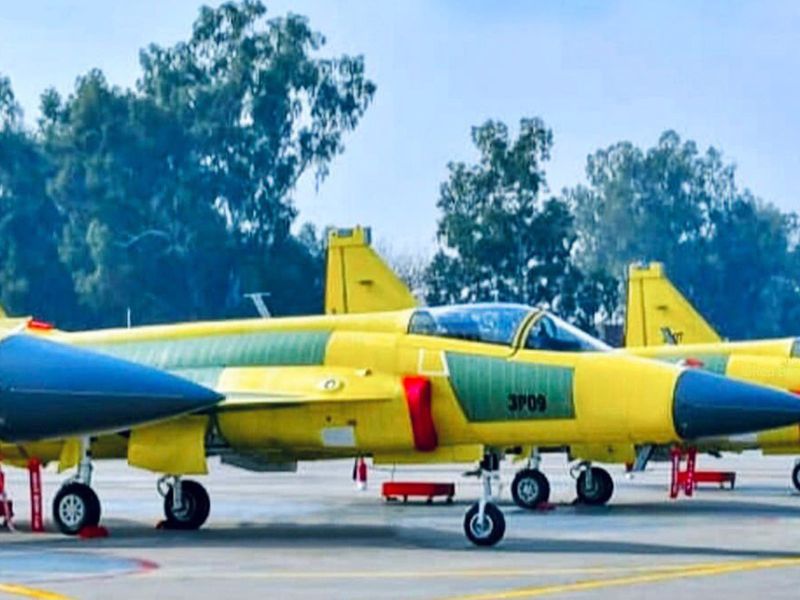

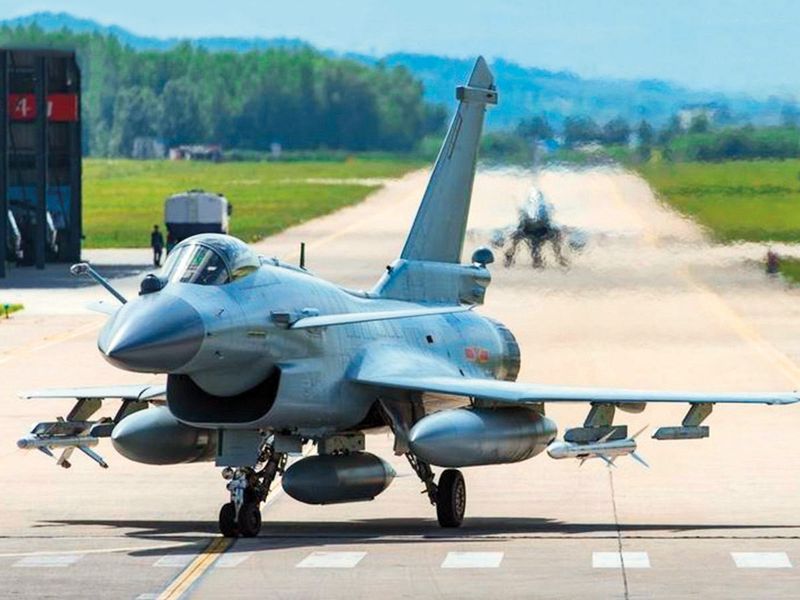

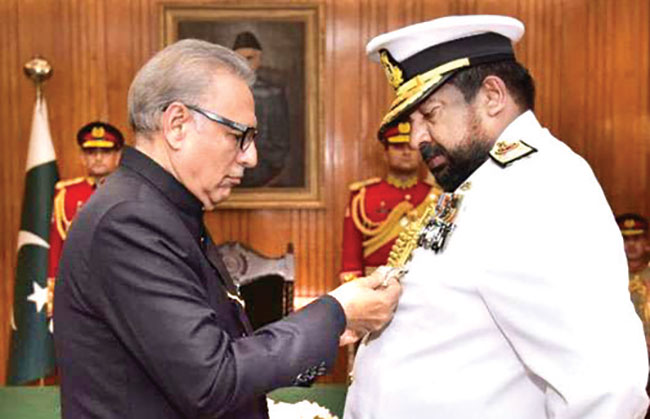
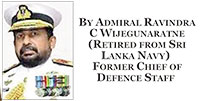 Pakistan military personnel are very fond of their Sri Lankan counterparts. They always help us. Thanks to a generous stipend from Sri Lanka, we lived very comfortably in Karachi and I had the opportunity to take part in Inter-Staff College sports activities.
Pakistan military personnel are very fond of their Sri Lankan counterparts. They always help us. Thanks to a generous stipend from Sri Lanka, we lived very comfortably in Karachi and I had the opportunity to take part in Inter-Staff College sports activities.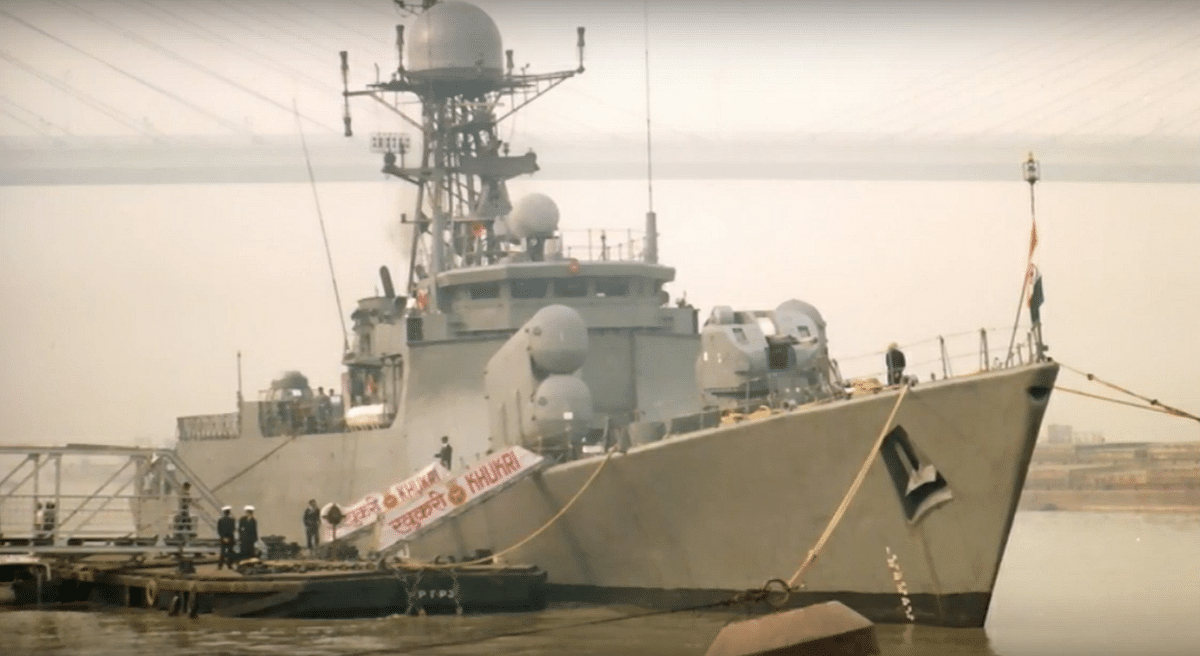

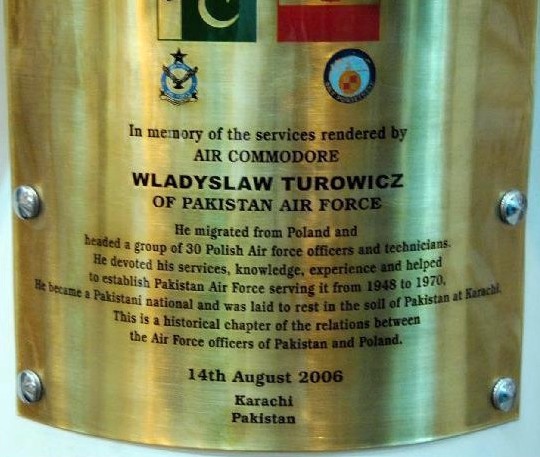

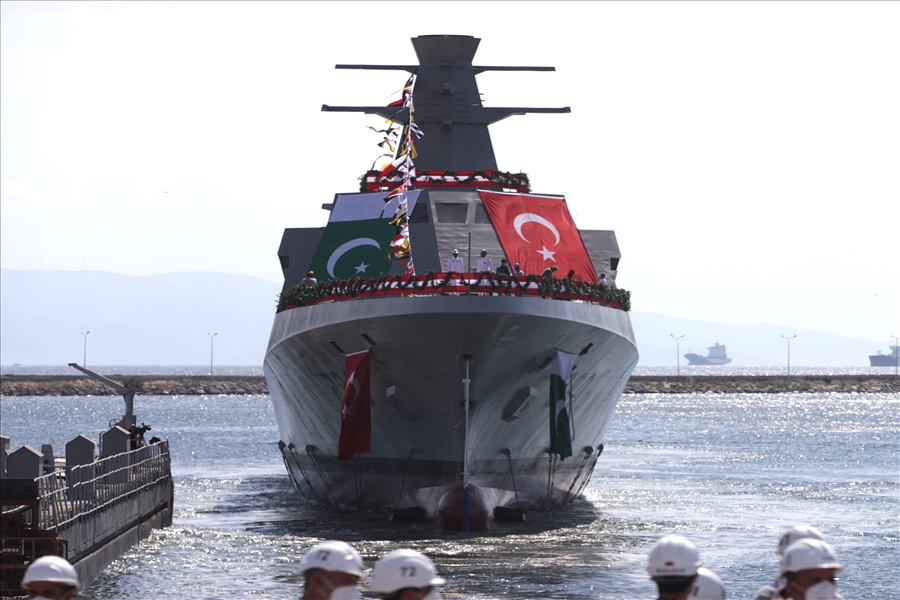
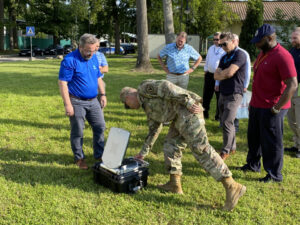




Pakistan & regional undercurrents by Asif Haroon Raja
Posted by admin in Afghan Refugees Bombing in Pakistan, Brig(R) Asif Haroon Raja, China, China -Pakistan Defence Co-operation, CHINA -PAKISTAN FRIENDSHIP, CHINA PAKISTAN CORRIDOR-CPEC, Commentary, Decline of Empires, Defense, India Exported Terrorism in Pakistan, India Intelligence RAW Terrorism in Pakistan, Pakistan Fights Terrorism, Pakistan Scape goat For US Afghan Defeat, Pakistan Security, Pakistan Security and Defence: Enemy & Threats (Internal & External), PAKISTAN THINK TANK ANALYST, PAKISTAN THINK TANK DISTINGUISHED COMMENTATOR, Politics & International Relations, RAW-BlackOPS & Indian Media Lies, RAW-MOSSAD NEXUS, US Attacks on Pakistan, US Back stabs Pakistan, US CLEAR & PRESENT DANGER TO PAKISTAN, US FOREIGN POLICY & INTERNATIONAL LAW on July 4th, 2021
Pakistan & regional undercurrents
Asif Haroon Raja
Global upheavals
Recent times have seen upheavals at the global, regional and domestic levels. At the global level, much against the expectations of a thaw in the strained relations between the US under Joe Biden and China-Russia, ego and arrogance have come in the way of the change. The US considers China to be the chief threat to its global monopoly since China’s rise has brought about a ‘tectonic’ shift in the global balance of power’. The world order has transitioned to a new power equation where the US and China are two poles with other centres of power adjusting to co-exist. Shifting power alliances and realignments currently underway portend a new power structure whose shape is yet to evolve. The pivot of geo-economics has shifted from the West to the East, where China in concert with Russia would play a key role. The Indo-Pacific policy of containment of China by the QUAD (USA, Japan, Australia, and India) is bound to fail. Similar will be the fate of the US desire to make India the policeman of South Asia through multiple defence pacts. Far-Right has gained strength in the western world while fascism and racism have heightened in the USA, Israel and India. The US policy of military adventurism has narrowed its circle of friends, while the policy of peace, friendship and shared dividends pursued by China has helped it in enhancing its influence and circle of friends.
Unresolved Palestinian issue
Gaza was once again viciously bombarded and the Al-Aqsa mosque desecrated by the Israeli forces in the holy month of Ramadan. During the 11-day slaughter and destruction, 265 Palestinians including 66 children were killed and hundreds wounded, while only 12 people were killed in Israel by the rockets fired by Hamas. The homemade rockets, however, for the first time dodged the invincible Iron Dom, which has become a cause of concern for Israel. Except for some token condemnations and protest marches, the Muslim world stood aloof. The two-state solution as envisaged in the Oslo Accord still remains a forlorn hope.
Turbulence in Jammu & Kashmir (J&K)
Although the Line of Control (LoC) in J&K has been quietened after the secretive understanding arrived at between the DGMOs of the two arch-rivals, no breakthrough has been achieved at the state level. India is not prepared to restore the special status of Indian Occupied Kashmir (IOK), or to lift the lockdown and stop persecuting the Kashmiris. The Modi regime has intensified its efforts to change the demography of IOK. Like the Palestinian issue, the Kashmir issue is the oldest unresolved dispute lying pending in the tray of the UN since 1948.
Cross border terrorism
Cross border terrorism against Pakistan by RAW-NDS from Afghan soil continues unceasingly. Apart from striking targets in Waziristan and Baluchistan, Johar Town in Lahore was also targeted by the combined nexus of RAW-NDS-CIA-Mossad to kill interned Hafiz Saeed who has always been viewed by India as a big threat to its security particularly in IOK because of his huge followings both sides of the LoC as well as in Punjab. Objectives were to get rid of this threat and also trigger religious Far Right backlash in Punjab. Within four days the whole network was rounded up and the masterminds identified by Punjab Police.
Various anti-Pakistan terrorist groups like TTP, Jamaatul Ahrar Lashkar-e-Islam based in Afghanistan, Baloch rebel groups (BLA, BRA, BLF) and Sindh based separatist groups have been unified by these agencies to create trouble in provinces. At the same time, the PDM has been instigated to recommence rallies to foment political instability. The hybrid war is targeting the Pak Army and the ISI to tarnish their image.
India’s penchant for falsehood
False narratives and stories are still being woven by India’s Chronicles which was busted by the Disinformation Lab in Brussels last year. The sole purpose of India’s media war is to disrepute Pakistan and its institutions. The latest cooked up story is the imaginary plot of some senior Pak Army officers to assassinate Gen Qamar Bajwa. It’s a clear indication that Indian military leadership is fearful of him and see him as a big threat to their sinister plans.
The other woolly story circulated by Indian media is about the drone attacks on the Indian airbase in Jammu, which have been pinned on Pakistan. Logically the two bombs allegedly dropped on the airbase should have destroyed it including the warplanes and helicopters parked in the aprons and on the runway. Interestingly, the bombs could only make two small holes in one of the barracks and didn’t cause any human or material damage which itself speaks of the lunacy of the allegation made. The purpose was to deflect the attention of the world from its fiasco in Lahore where RAW was caught with its pants down, to create another sensation, hide its atrocities in IOK, and to win the sympathies of the world. It backfired since India once again failed to substantiate its accusations.
Yet another bizarre concoction that was floated by India was about the spy drone flying over Indian Embassy in Islamabad. For argument sake, even if it is accepted as true, what was so strange about the drone flying within its own territory? While levelling this wonky complaint, India forgot that its spy drones have been repeatedly crossing deep inside AJK to photograph our posts and deployments along the LoC and in depth, and every intruding drone was shot down. This year, three intrusions were carried out.
India’s quandaries
The belligerence of Modi and his hawks against Pakistan have considerably mellowed down because of multiple factors. Its venture of integrating disputed IOK and promulgation of anti-Indian Muslim laws have backfired. The Sikh movement together with Kissan Tehriq and the Naxalite movement has become existential threats. Covid-19 has spun out of control and the daily death rate is the highest in the world. It has plummeted India’s rising economy into negative and BJP’s popularity has declined as gauged from the results of recent by-elections. Seculars in India have joined hands with the minorities to confront BJP’s fascism and racism.
Externally, India has suffered several setbacks. India’s plan to annex Gilgit-Baltistan (GB) was disrupted by China by taking control of important heights across the LAC in the Himalayas from where the PLA dominates the lone supply route to the KKH and GB. It is now faced with a twin threat for the first time. While Afghanistan has slipped out of its hands, it has also lost Iran after its ouster from Chahbahar and railway projects.
Both the US and Israel are unhappy with India over its poor performance against China, and its failure to accomplish any of the objectives against Pakistan. More and more voices of criticism are now heard in the West after exposure of scandal of India’s Chronicles, Goswami WhatsApp chat, continued lockdown of Kashmiris since August 5, 2019, denial of basic rights and demographic change.
Other regional countries
Iran has snuggled away from India and has come into the loop of China after the latter signed a $480 billion long term agreement with Iran.
While there is a thaw in Pak-Iran relations, Saudi Arabia and UAE have restored old ties with Pakistan and the former plans to install an oil refinery at Gwadar.
Pakistan has got closer to Turkey, Azerbaijan, Sri Lanka, some Central Asian States and is fast improving its relations with Russia and African countries.
Situation in Afghanistan
The US has been forced to end the 20 years’ war in Afghanistan, which is a telling reminder of its failed policies. Pakistan played a pivotal role in bringing the Taliban and the US to the negotiating table and signing the historic Doha agreement as well as in starting an intra-Afghan dialogue to arrive at a political settlement. While Trump was keen to pull out occupying troops by May 1 this year, Biden, influenced by the spoilers of peace, had second thoughts and was inclined to extend the date of exit. In the face of a rise in attacks by the Taliban, he had to announce in April that the withdrawal would be completed by Sept 11. The bulk of US-NATO troops have already withdrawn, and 7 military bases including Bagram vacated and handed over to the ANSF. Reportedly, the withdrawal will be completed by end of August if not earlier, but the US intends to keep a small contingent of about 650 personnel in the Kabul military base for the protection of its diplomats in the US Embassy and probably for technical support to the ANA.
The Taliban will not accept the presence of a single foreign soldier and have also not welcomed Turkey’s offer of taking over the security of Kabul airport. Washington has requested Kyrgyzstan, Tajikistan and Uzbekistan to temporarily house around 9000 Afghan drivers, translators and workers employed in Bagram airbase and their families. The Biden administration has pledged to expedite immigration visas for the Afghans who worked with the US forces, but the visa seekers are desperate to fly to safe havens at the earliest. To support the shaky regime in Kabul and the vacillating ANSF which lacks the capacity to confront the Taliban, Biden promised financial assistance to the visiting Ashraf Ghani and Dr. Abdullah.
The US is also urgently in need of a military base outside Afghanistan, supposedly for counterterrorism against Al-Qaeda, Daesh and the Taliban. With the fizzling out of Ladakh as a base, the US persuaded Pakistan to provide a military base and besides promising some goodies, it used coercive tactics with the help of FATF and IMF but Pakistan firmly refused. Imran Khan stated that Pakistan is ready to cooperate with the US for peace and development of Afghanistan but not for war and conflict. Air corridor and land routes have been made available till the completion of the withdrawal of US-NATO troops. The three Central Asian states have also refused to provide military bases to the US because of Russian influence.
The desire for a military base outside Afghanistan after losing the war and the stated purpose of counter-terrorism is ludicrous. Al-Qaeda and ISIS were CIA creations. Obama had made a declaration in 2012 that the Al-Qaeda network in Afghanistan had been effectively disrupted, dismantled and destroyed. Factually, the bulk of Al-Qaeda operatives had shifted to Arabian Peninsula in 2004 after the Bush administration opened the second front in Iraq in March 2003. More than 600 Al-Qaeda leaders and operatives were caught by Pak security forces and handed over to the CIA who were shifted to Gitmo. So, against which Al-Qaeda the new US administration want to carry out counter-terrorism?
As regards ISIS, after using it in Iraq and Syria, sizeable numbers of its fighters were airlifted in helicopters from the Middle East by CIA-RAW to Nangarhar in Afghanistan in 2014. After marrying them with Jamaatul Ahrar, an offshoot of TTP, they were pitched against the Taliban and also launched into Baluchistan and Karachi. After the Doha agreement, most of the attacks on civil targets were the doings of Daesh, but the spoilers blamed the Taliban to disrepute them and the peace agreement. Lastly, the US has no moral right to carry out counter-terrorism against the victorious Taliban with whom it has signed a peace agreement and the Taliban are restraining themselves from attacking the foreign targets.
Having lost the war and forced to withdraw, and failing to acquire a military base, the only option left with the spoilers of peace is to resort to dirty tricks to keep war-torn Afghanistan simmering in the cauldron of instability and insecurity. India and the puppet regime in Kabul whose days are numbered are fully involved in the game of USA. This is the only way to lessen their pangs of shame and humiliation. They will make all-out efforts to create as many hurdles and problems for the Taliban to ensure that they fail in restoring peace and order in the country.
With this aim in mind, the losers are frenetically circulating frightening scenarios and painting the Taliban as man-eating beasts, once again on the verge of snatching power. They are scaring the regional countries that in case of takeover by the Taliban and establishment of Islamic Emirate, all hell will break loose and it will spell disaster for the people of Afghanistan and for its neighbours. Influenced by the propaganda, Russia, China, Central Asian States, Iran as well as Pakistan are keen that a broad-based Republic regime is established in Kabul and are uncomfortable with the idea of Islamic Emirate.
While upholding this stance, seemingly they ignore certain historical facts and ground realities. Soon after toppling the Taliban regime led by Mulla Omar in Nov 2001, the US spent $ 3 billion to form a Northern Alliance heavy regime in Kabul led by President Hamid Karzai. It accommodated all the notorious warlords and drug barons. The puppet regime ruled at a stretch till Aug 2016, after which an unnatural unity regime of Ashraf Ghani-Dr. Abdullah was formed, in spite of their incompetence and corruption are still in power, and wants to remain in power in future as well. The two regimes completely failed to bring peace and prosperity to the country, which had remained peaceful, stable and crime-free during the 5-year rule of the Taliban. The Taliban achieved this feat because of the imposition of the Islamic system based on justice.
Stability couldn’t be achieved by the US-installed regimes in spite of the US spending $ 1.5 trillion. Throughout the period of occupancy, the country saw bloodshed, death and destruction. The US never made sincere efforts to build Afghanistan, eliminate poverty and illiteracy, provide jobs and make the lives of the people comfortable. Peace talks with the Taliban in 2011 and the opening of a political office in Doha in 2013 were ruses to divide the Taliban movement and not to restore peace. Even after the Doha agreement in Feb 2019, the spoilers have been stoking instability in Afghanistan to find an excuse to delay the exit of occupying forces.
The US-NATO-ANA forces were not showering flowers on the Afghans during their longest war, but raining molten lava causing over 5 lacs civil casualties. About 5000 ill-clad, ill-equipped ragtag resistance forces were kept on the run for 20 years at a stretch. It was a nightmare for them and they tried to survive in hell. Pakistan which was forced to fight the US war suffered the most, but India as well as those in power drew maximum benefits from the US largesse.
With this background, what greater calamity can befall upon the Afghan Pashtuns in general and the Taliban in particular after the departure of occupying forces whose three generations have seen nothing but war? How will it become more unstable, lawless and insecure under the rule of the Taliban which has learnt lessons, gained maturity and experience, and know the pitfalls of a civil war?
In 1990, there were 7 Mujahideen groups of various ethnicities with no unity of command under one ruler. Conversely, the Taliban movement has remained united and focused, and it saw three Ameers, Mullah Omar, Mullah Mansour and incumbent Mullah Haibatullah Akhundzada succeeding each other with no discord. Haqqanis under Sirajuddin remain loyal to the Ameer.
It is befuddling that Pakistan is toeing the US line to let the Ghani-Abdullah regime share power with the Taliban under a Republic despite having suffered the most in the US imposed war on terror due to the perverse role of ANA heavy regime in Kabul which is in collusion with India.
White House and the Pentagon once again tried to win over Pakistani leaders and officials. Given her long-term strategic interest as well as past experience, Pakistan cannot afford to even think of aligning herself with a power that is openly at loggerheads with China, Russia and Iran, and strategically aligned with India. Pakistan’s nuclear program and the CPEC are eyesores for the US. More than that, it will be a mortal sin to betray the people of Afghanistan once again. Only fools rush in where angels fear to tread. Moreover, it must not be forgotten that the U.S still has unfinished business in Pakistan.
Pakistan’s contrasting relations with the USA and China
Our Western friends never provided a security umbrella against expansionist India, and wasted our precious seven decades by making Pakistan run on a treadmill and obstructed its economic take-off. Pakistan-US relations overshadowed by mistrust and unequal partnership are still transactional in nature. The sword of the FATF hangs over the head in spite of Pakistan fulfilling 26 of its 27 points. Pakistan Foreign Minister rightly questioned whether the FATF is a technical forum or political? The IMF loan has become more burdensome after Saudi Arabia and UAE at the behest of the US took back their loans and facility of deferred oil payment.
Conversely, the spectrum of the Pakistan-China relationship spread over 70 years has become multifaceted. The CPEC which is the flagship of $ 1.3 trillion BRI has elevated the relationship to an all-weather strategic cooperative partnership. The CPEC which is equally beneficial to both has bound China to help in safeguarding Pakistan’s sovereignty, independence and territorial integrity. Successful completion of the CPEC by 2030 will realise the dream of Pakistanis for a prosperous, secure and self-reliant country.
Domestic squabbling
Internally, the ruling PTI regime is up against formidable challenges. So far it has not been able to steady the dwindling economy or fulfil any of its lofty promises. Notwithstanding slight improvements made in the macro-economics, at the micro-level, no relief has been provided to the masses. Inflation and price hike are at a new high which has frustrated the people. Its lack of performance has diminished the charisma of Imran Khan as could be seen from the results in the by-elections in all the four provinces. It gave space to the PDM to push the government against the wall, but its disunity has given a welcome breather to the rulers who are also faced with internal cracks because of the emergence of a new group under Jahangir Tareen. This group has made the position of the PTI in Punjab and in the Centre tenuous.
Political polarization has blocked the government’s efforts to carry out essential reforms and it is left with no choice but to rule by presidential ordinances. Sharif family continues to pose a political threat since the PML-N vote bank in Punjab remains intact. The PPP under Bilawal in Sindh is exploiting the provincial autonomy under the 18th Amendment and has adopted a posture of non-cooperation. Bilawal and Sindh Chief Minister are flying to Washington to offer their good services if brought to power. Disturbing law and order in rural-urban Sindh and in Baluchistan where the foreign paid proxies have again stepped up terrorism, and negativism of social media are causes of consternation for the government.
Covid-19 is another big challenge for the ruling regime which has slowed down its development and socio-economic programs. It handled the first and second waves of the pandemic intelligently and is handling the third wave skillfully. The fourth wave is reportedly round the corner. China has extended full support to tackle the disease and provided vaccines free of cost. Now Pakistan has started manufacturing the vaccines locally, which will speed up the vaccination campaign. But the majority of the people living in rural areas are averse to vaccination and see it as a ploy of Dajjali forces to depopulate the world.
What is encouraging is fast track construction of the hydel power projects including the Mohmand dam which would greatly help in ridding the nation from the curse of the IPPs and would provide cheap electricity and overcome water crisis. It will be very satisfying if the GDP rises to 3.8% to 4% as assured by the new Finance Minister. The graph of exports, revenue collection and remittances from the expatriates are on the increase.
Pakistan needs to learn from China and take concrete steps to eradicate corruption, crimes and poverty, to increase exports, improve governance, reform the state institutions, boost up agriculture and industry, and encourage the private sector.
The writer is retired Brig Gen, war veteran, he took part in the epic battle of Hilli, defence & security analyst, international columnist, author of five books, his sixth book is under publication, Chairman Thinkers Forum Pakistan, Director Measac Research Centre, Member CWC PESS. asifharoonraja@gmail.com
No Comments